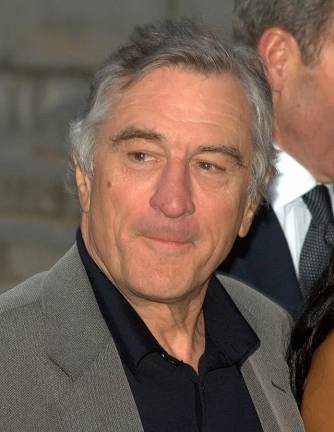As “Mean Streets” Turns 50, Is NYC on the Brink Once Again?
An unforgettable film about the the city’s dark days featured home grown talents including director Martin Scorsese, and rising stars Robert DeNiro and Harvey Keitel. Some worry the image it painted of NYC is once again valid 50 years after its original release.


Fifty years ago, “Mean Streets” was released, and it immediately branded itself into popular culture with its unflinching portrayal of the underside of life in New York.
Directed with loving care by Little Italy native Martin Scorsese, and starring Brooklyn’s Harvey Keitel and Greenwich Village born and bred Robert DeNiro, in an electrifying breakthrough screen performance, the movie had an undeniable authenticity.
New York looked like an out of control, crime-infested burg, in which no one was safe for long from sudden and unexpected violence.
Problem is, perhaps the city has gone back to those bad old days. Yes, politicians with skin in the game will declare that statistics show how incidents of violent crimes in the city have actually declined over the past year.
But the key measure is that residents and tourists alike feel nervous about walking the streets and taking the subway. As the saying goes, tell your statistics to shut up.
Meanwhile, “Mean Streets’” enduring brilliance was its uncanny ability to capture a specific moment in time. In the early 1970s, New York was on the brink of financial collapse and the gloom permeated every aspect of life here.
This malaise seemed to continue until Saturday Night Live came along on Oct. 11, 1975–and almost single-handedly lifted the spirits of New Yorkers. Once again, the city looked cool.
Bad Timing?
For better or worse, “Mean Streets” was a movie about New York’s crime scene–which came out a year after “The Godfather” and a year before “The Godfather, Part II.”
“Mean Streets” may have suffered from a degree of bad luck and unfortunate timing. At the time of its release in 1973, it’s possible that “Mean Streets” got lost in the Godfather hysteria. Plus, “Serpico,” the movie that made Al Pacino a sex symbol and featured the good guy winning in the end, also came out in 1973. And “The French Connection” had won The Best Picture Oscar for 1971. That’s a lot of reality in New York.
While many respected film critics went out of their way to shower praise on “Goodfellas,” the public might have failed to put Mean Streets on a higher commercial plane.
Breakthroughs
“Mean Streets” also unveiled some special talents. It was produced by Jonathan Taplin, who had made his mark as the road manager for The Band and has gone on to distinguish himself at the University of California and as an author.
Above all, “Mean Streets” stands out for the arrivals of Scorsese and DeNiro as major Hollywood figures. While both had made movies earlier–and DeNiro had done a memorable screen test when he auditioned for the role of Sonny Corleone in the first Godfather movie –neither had established himself as one of the greats. Not yet.
In “Mean Streets,” filmgoers couldn’t tell if DeNiro was a skilled actor or a legitimate maniac. He was so good, so out of control as Johnny Boy, you could not be sure. Scorsese, then 30 years old, had waited his whole life to make a movie about his violent, perilous but classic-New York nabe of Little Italy.
Scorsese gave New York a kind of grit it had seldom seen in movies. His homage was utterly unapologetic. His story was not destined to end happily, with the two-bit mobsters finding Yuppie religion and going on to work on Wall Street.
No character was lovable. There were no life lessons in Scorsese’s story–except, maybe, for survival of the fittest.
Scorsese later directed “Goodfellas,” another classic New York movie featuring the unromantic side of working in organized crime.
Ultimately, “Mean Streets” should be regarded as one if the greatest New York stories ever told. Its freshness, alone, puts it a pedestal. It also gave Scorsese a platform to tell his tales.
Scorsese’s masterpieces, “Goodfellas,” “Raging Bull” and “Taxi Driver,” all depict a side of New York that will never exactly appear in Chamber of Commerce commercials. The violence, alone, should always set a Scorsese movie apart among the work of New York filmmakers. But violence is never gratuitous in a Scorsese movie. That’s, well, New York City, right?